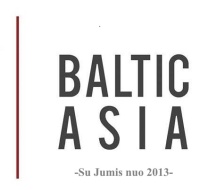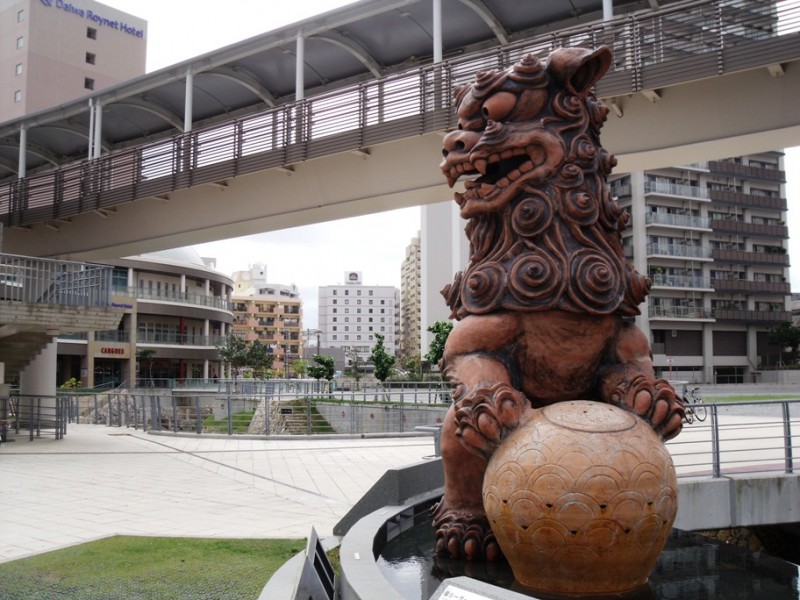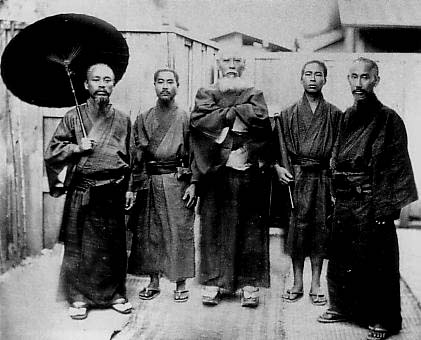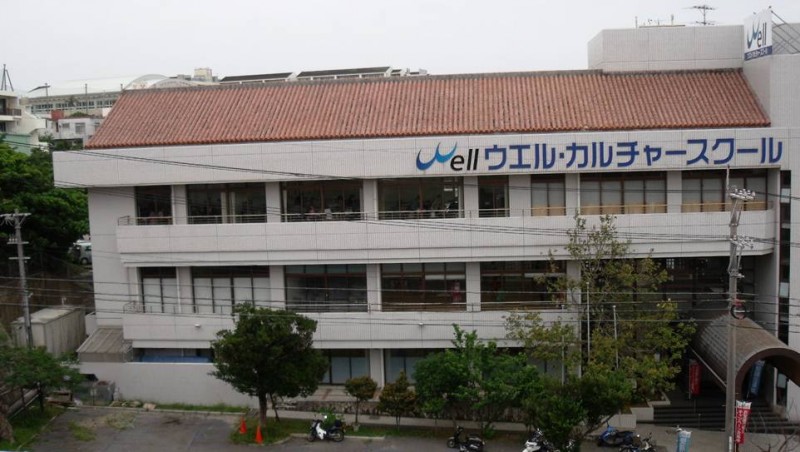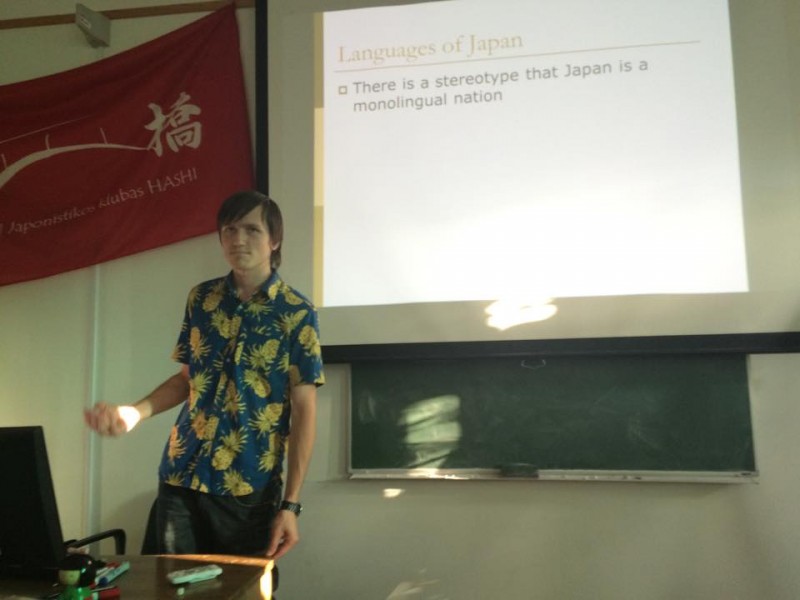Forgotten regional languages of Southern Japan
Those who have traveled inside Japan are already aware of the fact that each region in Japan has its own peculiar dialect or sub-dialect. It should not surprise anyone, taking into account the way Japan stretches up to the North down to the South, as well as different history prior to the Meiji Restoration. Nevertheless, there are a total of 3 prefectures in Japan where you can find regiolects so different from Standart Japanese that one can count them as separate languages. Needless to say, Hokkaido has the most divergent language, spoken by indigenous Ainu people, alas, almost extinct. The latter is an isolated language in the first place which means it has no proven linguistic relation to Japanese. However, some regional languages do exist even out of Hokkaido, but very few people have heard of them. Those are languages spoken in Ryukyu archipelago (Southern part of Japan), hence belonging to a Ryukyuan subfamily, a branch of Japonic languages. Nowadays they are spoken in Okinawa and Kagoshima prefectures in Southern Japan. Linguists typically distinguish 6 languages; the same 6 languages are also recognized by UNESCO. Those are Okinawan, Miyako, Yaeyama, Kunigami, Amami, Yonaguni languages. Even though languages shift to Japanese remains a serious problem for languages survival, and the general tendency to consider them mere dialects of Japanese prevails, the situation is gradually changing into a positive way. Every year since 2006 September 18, there is a regional languages day called Island languages day, or shimakutuba no hi, commemorated in Okinawa. This day is inspired by Ryukyu activists and the main goal is the promotion of local languages usage by holding speech contests and similar events. This year me, Audrius, has also made an attempt to participate in it.
Ryukyuan languages and their differences
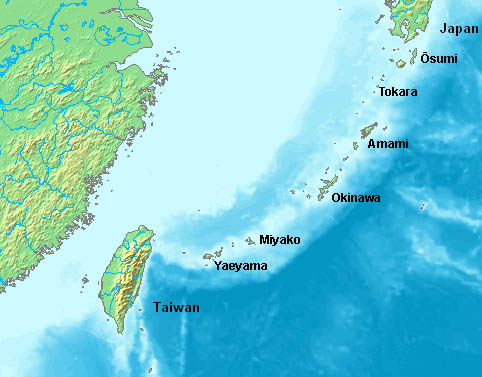
Ryukyu archipelago is situated between Kyushu and Taiwan.
It is important to note that the history and culture of Ryukyu islands considerably differ from the rest of Japan. One can feel that, for instance, when landing to Naha after Tokyo or other big Japanese city. It has an explanation. In fact, Ryukyu islands used to have its own state, Ryukyu Kingdom, until as late as the end of the 19th century. Its tiny area was almost 29 times smaller than the one of Lithuania! This little kingdom, despite having served as either vassal or tributary state of its bigger neighbours, had maintained its sovereignty, while its economic prosperity was guaranteed by an active trade with Eastern and Southeastern Asian nations. Furthermore, prior to the unification in 1429, there must have been even more tiny islands-states with their languages.
Shuri dialect of Okinawan language (homonym 沖縄口, uchinaaguchi), together with Classical Chinese, enjoyed a dominant position in a unified state. There were even short poems (ryūka) written in Okinawan. Having been spoken by the elite, it was known to having had sophisticated levels of politeness as does Japanese. It is probably the most vibrant Ryukyuan language, either in terms of native speakers, language enthusiast activities or written literature. Among activists, a local lecturer and one of the world’s best Okinawan language and culture specialists Fija Byron (I was lucky to having met with him in a real life), has contributed enormously to the promotion of the language. Despite this, the fact that the language is native to the most urbanized region in Okinawa also signifies even more evident vulnerability to the Japanese influence, compared to smaller remote islands. Therefore the above mentioned Mr. Byron once visited a local Okinawan woman in her 90s to consult a proper way to pronounce glottal stops, a feature which is almost lost in Okinawan nowadays.
The same island of Okinawa, only its northern tip harbours Kunigami (山原言葉, yanbaru kutūba), a regiolect which is usually considered a separate language from Okinawan. Its separate development can be explained by the fact that there used to be 3 separate kingdoms in the main island of Okinawa up until the 15th century. Despite relatively small area that the language is spoken in, it has 3 dialects. Kunigami has some phonetic archaisms, no longer present in Japanese, therefore can be an interesting source for comparative linguistic specialists.
Meanwhile, in Amami islands (Kagoshima prefecture), located more northwards, they have a language called Amami (しまゆむた, shimayumuta) with 25 000 inhabitants. It has more similarities with Japanese, but is not mutually intelligible nevertheless. Because of a high number of islands (8 inhabited ones) that Amami archipelago is comprised of, dialects of Amami differ significantly among each other.
Miyako islands stretch some 280 km to the southwest of Okinawan island. Here, Miyako (宮古口, myaakuftsy) is spoken. As the island is located even further from the main island, the language has even more differences, compared to either Okinawan or other Japonic languages. This language is distinguished by possessing non-nasal syllable-final consonants, such as z or r. It also contains some words with virtually no consonants. Therefore transcribing such a language is quite a challenge. Despite being spoken by very limited number of speakers, this language is fortunate to have an active promoter, Isamu Shimoji. This Miyakojima native has recorded numerous songs in Miyako language and runs a radio show in Miyako Island.
Going down some 100 km we would reach Yaeyama islands with a severely endangered Yaeyaman (八重山物言, yaimamuni) spoken there in multiple tiny islands scattered all across Yaeyaman Archipelago.
…Not to forget Yonaguni, a remote Westernmost Japanese island with 1700 inhabitants, located only 108 km far from the shores of Taiwan. Its relative geographic isolation from the rest of Ryukyuan archipelago also signifies the peculiarity of the language being used. One of the main features of Yonaguni (与那国物言, dunanmunui) is the sound /j/ being replaced by the sound /d/. Since the island was quite isolated, not belonging to any bigger political entities up until 12th century, their inhabitants used to have a unique writing system, called Kaidā logograms. Sadly, most of them have gone extinct without a trace.
History of Ryukyu languages – from autonomy to Nipponization
Even though nowadays all 6 regional languages and their variations are under threat, all of them in the past were more fortunate. For instance, Okinawan language was exceptionally privileged at times of the unified Ryukyu State, having been used extensively in the capital area. Not only it was spoken by the Elite, but also it as a language of numerous poems and songs. It was hence a lingua franca of all Ryukyuan islands. Generally minimal contact also meant development of diverse regiolects in other smaller islands. Despite this, enormous political changes have affected regional languages in an irreversible way. In 1872, Ryukyu was made a vassal state of Japanese Empire, while in 1879 as a part of abolition of the han system, the islands were consequently incorporated, making it Okinawa Prefecture. That is when the era of Japanese language dominance has started. As a result, Okinawan was fully removed from the education in as early as 1907 when its usage as a language of instruction was banned. In 1920s, so-called dialect cards became widespread – students who were caught using indigenous languages had to carry this as a symbol of shame. Full-scale Nipponization in the region lasted until the capitulation of Japanese Empire in 1945. After the war Japan was occupied by American forces until 1950, when it was followed by United States Civil Administration, while the rest of Japan regained its independence. This very period was marked by a complex identity crisis that the inhabitants of the Ryukyuan islands felt. Since public opinion was dominated by a wish to reunite with Japan, rather than staying a territory of the United States or declaring an independent republic, fostering indigenous languages and cultures was far from being a priority, excluding some minor exceptions. To the contrary, local officials in charge of education sought for continuous promotion and privileges for Japanese language.
The year 1972 marks the reversion of Okinawa to Japan which was met with euphoria by apparently most of islanders. As a consequence, Japanese is again prioritized over indigenous languages in forming the identity. Such murky tendencies see some improvements in late 1990s, when initiatives related to Okinawan culture start to make their way to the municipal level. In 1995, Prefectural Society of Okinawan Culture is founded. It would organize the first Ryukyuan public speech events. Around the same time Okinawan activists establish the Society for Spreading Okinawan which initiates the first “Island Languages Day” in prefectural capital Naha.
September 18 for local languages’ preservation
During the past decade Ryukyuan languages have drawn not only municipal, but also international attention and interest. In 2009, UNESCO (United Nations Education, Science and Culture Organisation) published Atlas of the World’s Languages in danger which included all 6 languages of the Ryukyuan Islands. In 2013 Okinawa Prefecture introduced an ambitious 10-years plan to increase the number of speakers by 30%. This plan has 3 phases: to make the public familiar with the languages, to encourage each region to promote them and to make Okinawan people actively use their languages.
However, one of the key initiatives to boost a public interest in regional languages was proclaiming September 18 “Island languages day” by Okinawa Prefectural Assembly in 2006. The date itself is not a mere coincidence, but is actually a so-called goroawase of Okinawan word for “kutuba“ (language, words, speech) written in numbers – 918 (ku-tu-ba) according to the way numerals are pronounced. Since then variegated events promoting local languages take place not only in Mainland Okinawa, but in the other Ryukyu islands as well. This year the main event was held in Urasoe, the 4th biggest prefectural city, located some 7 km far from Naha.
Despite all the current efforts though, each of these unique languages are threatened to get extinct. It is just a matter of one’s viewpoint which one of these should be considered the most vulnerable, while Atlas of the World’s Languages distinguish two smallest ones – Yonaguni and Yaeyaman – as severely endangered (the third worst category after extinct and critically endangered languages).
Kaunas also witnessed Okinawan language
One of my New Years Resolutions this year was to participate in the above mentioned Island Languages Day. I am studying Okinawan by myself, so I wanted to raise the prestige of this tongue by showing that it is attractive even for foreigners. Needless to say, the biggest obstacle to attain this goal was an impossibility to participate in the main events physically. So, I decided to take part in it symbolically – by preparing a short speech in Okinawan and say it in Kaunas, Lithuania and then share it on youtube and social websites. That is how the streets of Kaunas were witnesses of Okinawan, with a part of this celebration reaching Okinawa itself (the video was shared by Okinawan radio station “Okinawa shimakutuba broadcaster” (沖縄しまくとぅば放送局). To be more precise, this is not the single video clip where a foreigner speaks Okinawan. One of my biggest inspirations so far was a short video created by a young Dutchman where he explains his motives to learn this tongue, alas, still considered non-prestigious one, all in proper Okinawan.
Since September 18 was exactly Friday, I made a short presentation on these languages at Vytautas Magnus University (VMU), during the “Hashi” (VMU Japanese Culture Club) event. That is how a message about the Island Languages Day came to Lithuania and was spread right til Okinawa.
Author: Audrius Sabūnas
Additional information
- http://english.ryukyushimpo.jp/2013/08/29/11642/
- UNESCO Atlas of the World’s Languages in Danger
- An introduction to Ryukyuan languages (learning manual, free *.*pdf file)
Photos:
- Personal photo gallery of Audrius Sabūnas, BalticAsia
- A map of languages
- The Ryukyuans
- Excerpt from the Universal Human Rights Declaration in Okinawan (omniglot)
